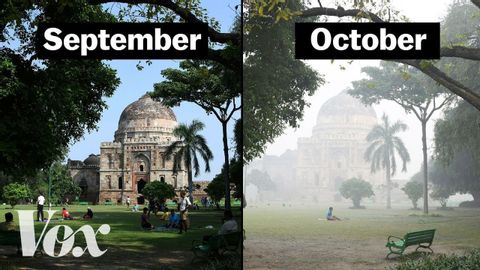是什麼讓德里的空氣如此致命 (What makes Delhi's air so deadly)
Helena 發佈於 2021 年 01 月 14 日  沒有此條件下的單字
沒有此條件下的單字US /fɔrs, fors/
・
UK /fɔ:s/
- n.軍隊;力;強迫;武力;影響力;力量;警力
- v.t.被迫;強行打開;催生
US /ˈbæriɚ/
・
UK /'bærɪə(r)/
- n.屏障;屏障;障礙物;柵欄;隔閡;障礙;屏障 (電腦)
- n. (c./u.)方法;措施;測量方法;單位;程度;小節
- v.t.估量;衡量;測量;度量;採取措施

